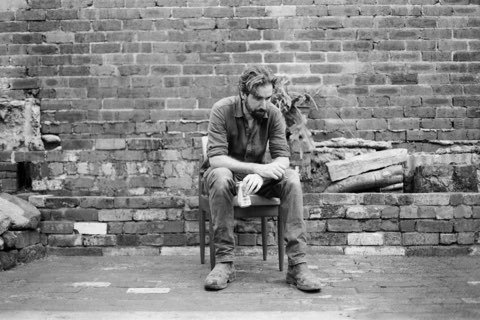paintings
JOE WILSON’S SOLO ART PRACTICE ENCOMPASSES PAINTING, SCULPTURE AND FURNITURE MAKING. His central theme is about THRESHOLDS, the line between inside and outside. Not just physical boundaries, but the spaces where identities and systems blur, fracture, and potentially redefine themselves. It is a figurative and literal artistic playground. Resonating with the ideas of deconstructionist thinkers including Roland Barthes ‘Mythologies’, Jean Baudrillard’s ‘Simulation’, and Hito Steyerl’s ‘Duty-Free Art’. Wilson’s installation like combinations of landscapes, sculptures, and furniture test rigid boundaries and expose the fluidity of concepts, mirroring the deconstructionist project to expose the fluidity of meaning and fixed hierarchies.
Deconstructing the Familiar: Following Barthes' notion of ‘mythology,’ Wilson deconstructs the seemingly self-evident distinction between art and life, painting and furniture. By blurring these lines, he questions established categories to expose the constructed nature of our perception. This playful subversion aligns with Baudrillard's concept of "simulation" where the real and its representaion become indistinguishable, challenging notions of authenticity and originality.
Into discourse: Extending into the political sphere, where fixed identities based on nationality, gender, and class are interrogated. Inspired by Steyerl's critique of ‘postcolonial meloncholia,’ Wilson moves beyond simplistic adversarial narratives, acknowledging the slippage and subjectivity within these categories. This aligns with deconstruction's emphasis on exposing the power dynamics embedded within language and systems of classification. To this end, Art and the systems supporting it must be scrutinised for the complicit role played be artists and intitutions in upholding the status quo, class structures and imbalanced institutional power.
Redefining the Self: In Wilson’s practice, the thresholds of identity domains are permeable membranes, allowing for a more nuanced understanding of the self. The landscapes for instance, can transcend scenery to become metaphors for the internal landscape of selfhood, where internal and external worlds collide and reshape each other. Similarly, his sculptures and furniture might function not just as objects, but as embodied experiences that challenge traditional notions of form and function. Scenery and decoration are weaponised in an effort to world build, transform, and make better through the artists open-handed efforts.
The Playful Power of Deconstruction: By employing a playful approach, Wilson invites viewers to engage in this process of deconstruction. The amusement that is evoked is not frivolous, but rather a powerful tool for dismantling creating space for new possibilities. This resonates with Barthes' idea of ‘jouissance,’ the intellectual pleasure derived from challenging dominant narratives.
Ultimately, Wilson’s offerings nestle comfortably within traditional categories, existing at the very thresholds where meaning is constructed and deconstructed but through a lens of creative dissent.











